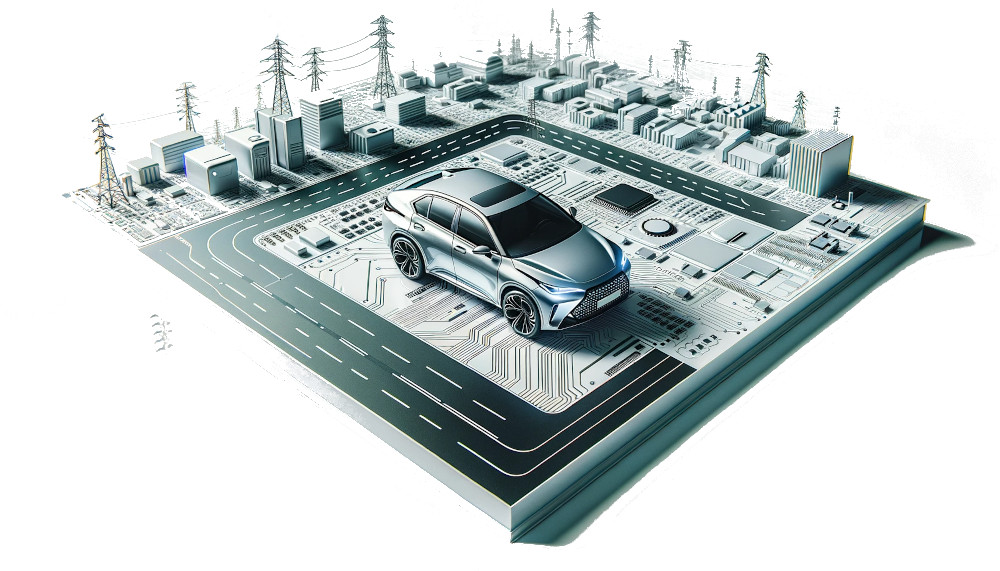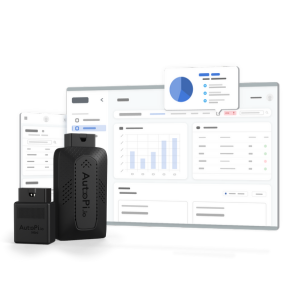Welcome to a revolution in vehicle technology! In the fast-evolving world of fleet management and vehicle security, RFID technology stands out as a key innovator. In fact, the global RFID market is expected to reach $40.5 billion by 2025, a testament to its growing impact in various industries.
This guide invites you to discover how RFID is reshaping the automotive industry, offering smarter solutions for fleet management, telematics, and security.
Whether you're a fleet manager, a tech enthusiast, or a business owner, this exploration will reveal the power and potential of RFID in transforming your approach to vehicle operations. Dive in to uncover the impact and possibilities of RFID in the world of vehicles.
What is RFID?
RFID, short for Radio Frequency Identification, is a technology that allows the identification and tracking of objects, animals, or people through the use of radio waves. It involves two key components: an RFID tag and an RFID reader.
The RFID tag, which can be as small as a grain of rice, contains a microchip and an antenna. This tag stores information and is attached to the object to be tracked.
The RFID reader, on the other hand, sends out radio waves to detect and read the information stored on the tag.
Unlike traditional barcodes that require a direct line of sight for scanning, RFID tags can be read remotely, without any visual or physical contact. This ability to communicate wirelessly makes RFID highly versatile and efficient in a range of applications, from tracking inventory in warehouses to managing library books.
RFID technology operates in various frequency ranges, including low, high, and ultra-high frequencies, each suited for different applications based on range, data speed, and environmental factors. The versatility of RFID lies in its adaptability to different industries and use cases, making it a powerful tool in the modern technological landscape.

How Does RFID Work?
RFID technology, a cornerstone of modern tracking and identification systems, operates through a fascinating interplay of radio waves and microchip technology. At its core, RFID is an innovative system designed to transmit information wirelessly, making it a versatile and efficient solution for various applications. The fundamental workings of RFID are based on two primary components: the RFID tag and the RFID reader.
-
The RFID Tag: Central to the RFID system, this tag comprises a microchip and an antenna. The microchip is programmed with a unique identifier and, potentially, additional data. The antenna attached to the microchip plays a crucial role in communication, enabling the tag to interact with the RFID reader. These tags come in different forms, from tiny chips that can be embedded into products to larger, more durable tags used for tracking assets in harsh environments.
-
The RFID Reader: Acting as the interrogator in the system, the RFID reader emits radio waves within a certain range. The strength and frequency of these waves are key factors that determine the distance and speed at which the reader can communicate with a tag. When an RFID tag enters this electromagnetic zone, it becomes activated by the radio waves.
-
Data Transmission: The activation of the tag triggers a process where the antenna in the tag harnesses energy from the reader's electromagnetic field. This energy powers the microchip, which then sends back its stored data to the reader via radio waves. The reader captures this data and converts it into a digital format, allowing it to be processed, analyzed, and stored in a computer system.
The unique aspect of RFID technology is its non-line-of-sight nature, enabling tags to be read without direct visual contact, which is a limitation in technologies like barcoding. This feature allows RFID tags to be embedded within objects or attached in non-visible areas, broadening their application scope.
Furthermore, RFID systems are categorized into passive and active systems. Passive RFID tags draw power solely from the reader's electromagnetic field and are generally smaller and less expensive, making them ideal for applications like inventory tracking. Active RFID tags, on the other hand, have their own power source, which allows them to transmit data over longer distances and store more information, suitable for high-value asset tracking.
|
RFID Reader Emission
|
Tag Activation
|
Data Transmission
|
Unique Features
|
|---|---|---|---|
| Emits radio waves within a specific frequency range, initiating the RFID operation. | The tag's antenna picks up these waves and activates the microchip. | The activated chip transmits encoded data back to the reader via radio waves. | Ability to read multiple tags simultaneously and work in harsh conditions. |
| The reader's waves are the catalyst for the RFID process, determining the communication range and speed. | The energy from the reader's waves powers the microchip on the tag. | This communication happens within milliseconds, showcasing the system's efficiency. | Tags are durable and can withstand extreme temperatures, moisture, or chemicals. |
This table concisely summarizes the key aspects of how RFID works, categorized into four main stages: the emission of radio waves by the RFID reader, the activation of the RFID tag, the process of data transmission, and the unique features that set RFID technology apart.
Benefits of RFID: Transforming Fleet Management
RFID technology has revolutionized several industries and has particurlaly transformed the landscape of fleet management and keyless vehicle entry, bringing forth a host of advantages that streamline operations and enhance security.
In the realm of fleet management, the real-time tracking and monitoring capabilities of RFID are invaluable. This technology enables precise location tracking of fleet vehicles, which facilitates better route management, reduces fuel consumption, and optimizes maintenance schedules. Fleet managers gain the ability to make more informed decisions, leading to increased operational efficiency and reduced costs.
When it comes to keyless entry systems in vehicles, RFID stands out for its enhanced security features. The technology's complexity makes it challenging to duplicate, thereby reducing the risk of unauthorized access or vehicle theft. In fleet management, RFID tags can effectively monitor and control access to vehicles, ensuring that only authorized personnel have operation privileges.
Furthermore, the overall efficiency and cost savings brought about by RFID are remarkable. It streamlines a variety of processes, from inventory management to vehicle maintenance, cutting down operational expenses and saving valuable time. For keyless entry systems, the convenience of RFID technology offers users a seamless experience, allowing quick and secure access to vehicles without the need for traditional keys, thereby improving the user experience.
-
What Does RFID Stand For?
-
RFID stands for Radio Frequency Identification, a term that encapsulates its method of using radio waves for automatic identification and tracking.
Real-Use Case Example: RFID Keyless Entry
A car rental agency sought to streamline their operations and improve customer experience. They implemented RFID technology for keyless entry systems using RFID-equipped key fobs.
Customers could simply approach their rental cars with the RFID key fob, and the vehicle's RFID reader would instantly recognize it. This seamless process allowed customers to unlock and start their rental cars without the need for traditional keys or paperwork.
The benefits were evident:
-
Efficiency: Customers could pick up and drop off their rental cars quickly, reducing wait times and improving overall efficiency.
-
Convenience: The hassle of managing physical keys was eliminated, enhancing the rental experience for customers.
-
Security: RFID technology provided a secure means of access, reducing the risk of unauthorized vehicle use or theft.
This real-use case demonstrates how RFID technology in keyless entry and key fob systems can streamline operations and enhance convenience and security for both businesses and customers.
Enabling RFID-enabled Key Fobs with AutoPi
AutoPi device, a cutting-edge telematics device powered by the innovative AutoPi IoT infrastructure, provides an advanced solution for integrating RFID-equipped key fobs into vehicle systems. This integration enhances security, allows customization, and enables remote management. It revolutionizes keyless entry, making it smarter, more secure, and adaptable to diverse applications.
Incorporating AutoPi TMU CM4, a powerful telematics device, into RFID-equipped key fob systems opens up new possibilities for enhancing access control and vehicle management.





